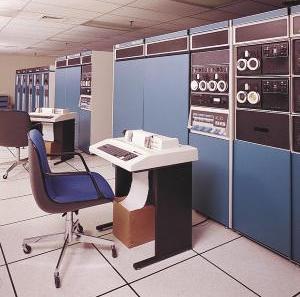| |
|
|
|
|

| |
|
|
 |
| |
|
|
|
|
|
| |
|
|
 |
|
Twice
as fast as its predecessor, the KI10, and four
times faster than the earlier KA10, the KL10
processor featured 386 microprogrammed
instructions, emitter coupled logic (a
state-of-the-art technology) and a 125 nanosecond
access time cache or buffer memory. One of the
more significant features of the KL10 was the
Console Diagnostic Computer, which used a
PDP-11/40 to perform those functions. |
|